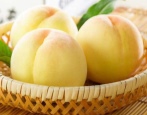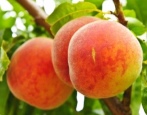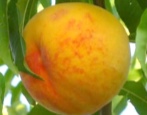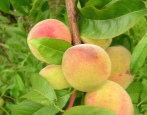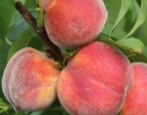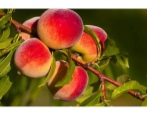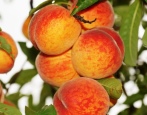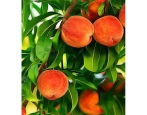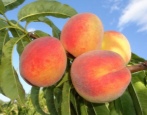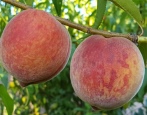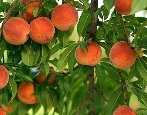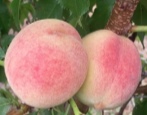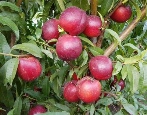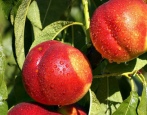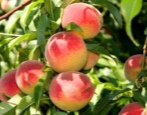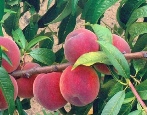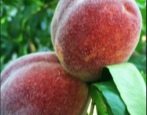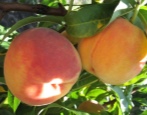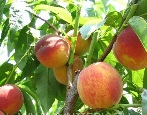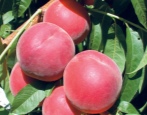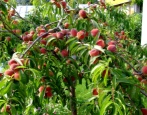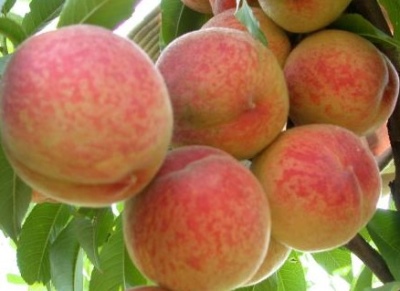
- Authors: USA
- Growth type: vigorous
- Ripening period: early
- Self-fertility: self-fertile
- Appointment: dining room
- Yield: high
- Transportability: bad
- Early maturity: for 3-4 years
- Growing regions: North Caucasian region
- Bone size: medium size
The Greensboro peach is known as one of the oldest varieties, yielding both in the southern regions and much further north. The variety is considered early maturing, dining for its intended purpose.
Breeding history
The Greensboro variety was bred back in 1891 in the United States, pollinating the Connet variety with varied pollen. In the domestic open spaces, the hybrid was initially tested in the warm Crimea. Variety testing of the new species took place on the territory of the Nikitsky Botanical Garden.
In 1937-1938. the seedlings were massively placed for detailed study outside the Crimean Republic, in the gardens of the Krasnodar Territory, Uzbekistan, Georgia, Moldova and other places.
The variety was included in the State Register in 1947, recommending it for cultivation directly in the North Caucasus region. In parallel, Greensboro spread to other southern territories.
Shortly before the collapse of the USSR, this variety was considered standard in virtually all southern republics and regions. Gradually, peach plantations began to appear in the center of the country, where trees are successfully grown in private gardens to this day. But at present, there is no mention of this variety of peach in the State Register of Domestic Breeding Achievements.
Description of the variety
The mature Greensboro peach tree has a dense, spreading crown with deep green foliage. At the tips, the leaves are slightly curled down. By the type of growth, the tree is vigorous. When flowering from the buds, many delicate pink flowers appear.
Fruit characteristics
Ripe oval fruits weigh 120 grams each. This size is considered large. The skin on the peach is dense, even somewhat coarse. There is a pronounced pubescence. The juicy pulp is soft creamy, with a slight greenish tint.
Taste qualities
The fibrous and dense pulp contains a medium-sized bone. The peaches taste pleasant, sweet and sour and very aromatic. Experts highly appreciate the taste of this variety. Out of five points, the Greensboro peach is given 4.8.
Ripening and fruiting
The early-growing variety pampers with delicious fruits for 3-4 years from planting. This ripening period is considered early. Flowering begins in May, and the fruits are ready to be harvested between August 10th and 30th. Greensboro has an annual fruiting frequency. The ripening time is influenced by climatic conditions. For example, in the south, peaches ripen by July, and in the black earth regions they are harvested with the onset of August.
Yield
The trees of this variety have a high yield. On average, it is possible to collect within 60-70 kg of fruits from one tree.
Growing and care
A sufficiently illuminated, open area is considered a good landing site. An important condition is the absence of drafts. There should be no stagnant water in the planting zone. The most successful option for placing a seedling will be a slope on the south side.
The seedlings are not particularly demanding for the soil; only strongly acidic or saline areas are not suitable for them. Too heavy soil can be lightened by applying humus, and very light soil can be mixed with mineral fertilizers.
The following dates are recommended for planting Greensboro peach trees.
In the south, trees are planted in September - early October. When planted in spring, seedlings react very badly to heat. Even plant burns from the sun's rays are possible.
For planting in a climate of the middle zone, it is acceptable to choose autumn or spring.The most important criterion is considered to be the temperature of the earth warming up to 15 degrees with a plus sign.
In the north, Greensboro peach trees are planted only in spring, when the soil reaches a temperature that is comfortable for the seedlings. In areas with harsh winters and little snow, peach plantings are necessarily covered for the winter.
It is advisable to choose Greensboro seedlings in specialized departments. They can be planted as annuals or biennials. The main condition is well-developed roots. When planting in spring, it is imperative to shorten the young tree immediately, leaving a maximum of 90 cm from the trunk. All existing side branches are cut by 1/3. When planting in the fall, it is important to break off the leaves.
Planting does not differ from the manipulations made for other varieties. According to the experience of experienced gardeners, the planting hole needs to be prepared six months before the planned planting. It is dug out 40 x 40 cm and filled with organic matter and mineral fertilizers.
There must be a distance of 3 meters between the seedlings of Greensboro. Peaches do not tolerate thickening. A "step" of 4-5 meters is left in the aisles.
This mixed peach variety - both young and ripe - requires regular watering. In the absence of natural precipitation, trees should be watered once for 1-2 weeks. Watering stops after the fruit is harvested. This will reduce the growth of unnecessary new branches and help the tree prepare for wintering by making it resistant to low temperatures.
It is advisable to carry out light loosening in the trunk circle. When mulching, it is not allowed to cover the trunk at its base.
Nitrogen in the form of humus is required for the peach tree in the spring, and summer dressing is always phosphorus-potassium complexes, although it is quite possible to do only with ash.
It is imperative to prune the peach, and the annual shoots of this particular variety must be shortened more when pruning than on most other varieties. Serious pruning is recommended in the spring, avoiding thickening of the crown.
Fruit overload is common on Greensboro, which can lead to freezing of the peach tree in winter. Therefore, sometimes there is a need to ration the harvest, partially sacrificing the ovaries.
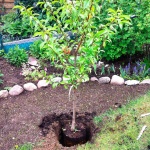
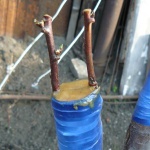
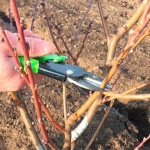
Frost resistance and the need for shelter
Winter hardiness in a peach called Greensboro is increased. The cultivar showed a high survival rate and similar adaptability. In fact, it happens that the tree manages to fully recover after freezing out the entire ground part (when exposed to a temperature of -35 degrees).
Peach seedlings tolerate short-term drought normally, but at the same time they can react to it with a decrease in yield, leaf fall and further difficulties during wintering.
Disease and pest resistance
Greensboro is highly resistant to diseases and pests and moderately resistant to clotterosporia.
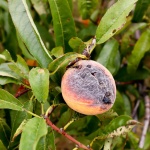
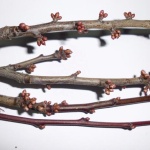
Review overview
The variety can be successfully grown on soils that are not very suitable in composition, since it responds well to grafting on other crops.
This hybrid is a favorite on private farms and is usually eaten fresh and unprocessed.
Transportation of peaches over long distances is often difficult. During transportation, they are easily damaged, darken and acquire an unattractive presentation. If you plan to transport peaches, they are harvested at the stage of technical ripeness, that is, 3-4 days before final ripening. The fruits must be packed, interleaved with soft, absorbent material.
First of all, the Greensboro peach is attractive for gardeners in the middle lane, since it is one of the few that has increased winter hardiness.
